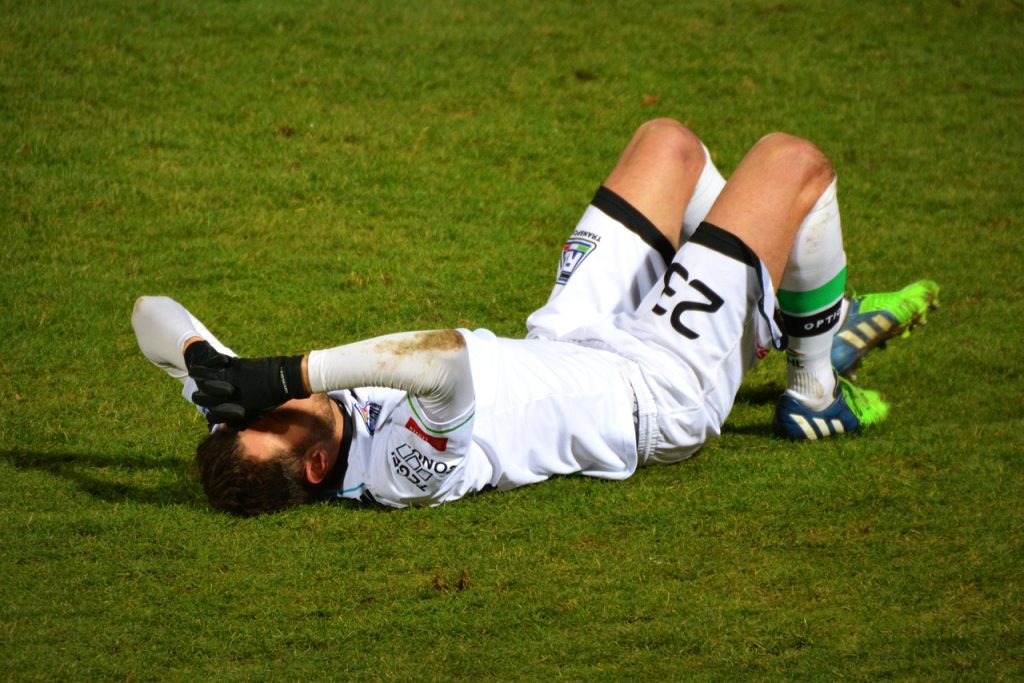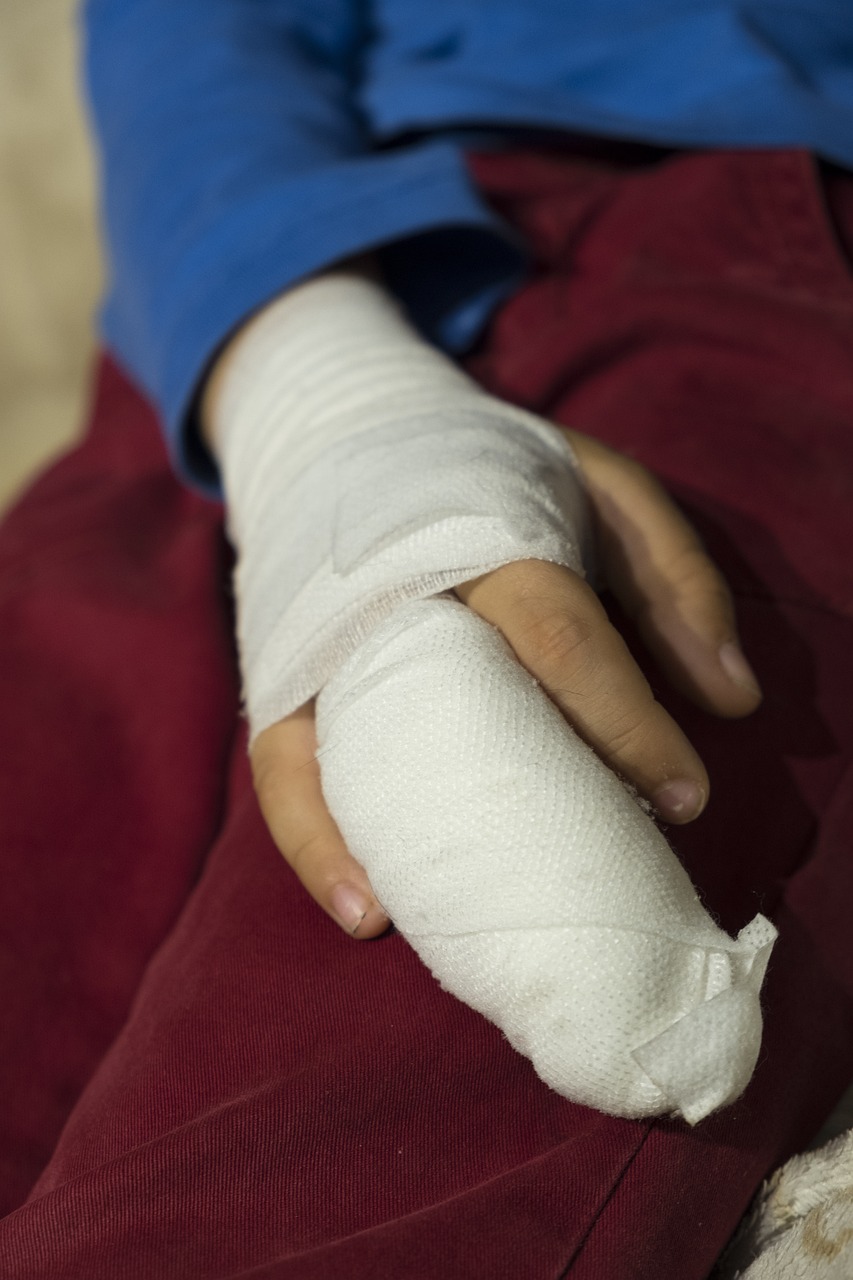What is an injury?
An injury refers to harm or damage inflicted on the body as a result of an accident, impact, overuse, or other traumatic incident. Injuries can range from minor cuts and bruises to more severe issues like fractures, sprains, strains, and tears in muscles or ligaments. They can occur during sports activities, day-to-day tasks, exercise, or due to underlying health conditions. Prompt and appropriate treatment is crucial to ensure proper healing and prevent long-term complications. Understanding common types of injuries, their causes, symptoms, and treatment options can help individuals stay informed and take necessary precautions to reduce the risk of experiencing them.
How do injuries happen?

Injuries can arise from accidents, overexertion, repetitive movements, poor technique, or environmental conditions. Accidents like slips or falls can cause anything from minor cuts to serious harm. Overexertion through pushing the body too hard or not resting enough can result in strains or fractures. Doing repetitive movements without adequate recovery may lead to conditions like tendinitis or carpal tunnel syndrome. Incorrect technique during activities can strain muscles and joints. Environmental factors such as slippery floors or poorly maintained equipment can also contribute to injuries. Underlying health issues like osteoporosis or arthritis may increase susceptibility to injury as well. Understanding how injuries occur is key to preventing them and promoting overall well-being.
8 ways to recover from injury faster and bounce back better
Giving yourself the correct amount of time
Giving yourself the correct amount of time to recover from an injury is crucial for a full and proper recovery. First and foremost, it’s essential to follow the advice of healthcare professionals, such as doctors or physical therapists, regarding the specific injury and its recommended recovery timeline. Ignoring or rushing through the recovery process can lead to setbacks or reinjury.
Listening to your body is also important; pay attention to any pain, discomfort, or limitations when resuming activities. Rest is vital during the initial stages of recovery to allow the body time to heal. As symptoms improve, gradually reintroduce movement and activity while monitoring how your body responds.
It’s essential to follow a structured rehabilitation program if one has been prescribed. This may include exercises to strengthen muscles, improve flexibility, and enhance overall function. Proper nutrition and hydration support the body’s healing processes.
Factors like age, overall health, the severity of the injury, and individual healing rates can influence recovery time. Some injuries may require weeks or even months to fully heal. Patience is key during this process; pushing beyond your limits too soon can delay progress.
Consult with healthcare professionals if unsure about when it’s safe to return to regular activities or sports. They can provide guidance on the appropriate timeline for returning to exercise while minimizing the risk of re-injury. By allowing yourself adequate time to recover fully from an injury, you set a foundation for long-term health and well-being.
The R.I.C.E method
The RICE technique is a commonly recommended method for self-care and initial treatment of minor injuries, such as sprains, strains, or bruises. RICE stands for Rest, Ice, Compression, and Elevation.
Rest: Giving the injured area sufficient rest is crucial to allow the body’s natural healing process to begin. Avoid activities that exacerbate pain or discomfort in the affected area.
Ice: Applying ice to the injured area helps reduce inflammation, numbs pain, and constricts blood vessels to decrease swelling. Use an ice pack wrapped in a towel for about 15-20 minutes at a time every 2-3 hours in the first 48 hours following the injury.
Compression: Using compression bandages or wraps can help reduce swelling and provide support to the injured area. Make sure not to wrap too tightly as it can hinder circulation.
Elevation: Elevating the injured limb above heart level can help reduce swelling by promoting drainage of excess fluid from the affected area. For example, prop up your leg on pillows when lying down with an ankle injury.
It’s important to remember that while the RICE technique can be effective for minor injuries, more severe or persistent symptoms may require medical attention. If pain, swelling, or limited mobility persist despite self-care measures, seeking advice from a healthcare professional is advisable.
Cold Therapy
Cold therapy, also known as cryotherapy, is a treatment method that involves applying cold temperatures to the body to reduce pain and inflammation. This can be done using ice packs, cold packs, ice baths, or even specialized cooling devices. Cold therapy works by constricting blood vessels, which decreases blood flow to the affected area and reduces swelling and inflammation. It also helps numb nerve endings to alleviate pain.
Cold therapy is commonly used to treat acute injuries such as sprains, strains, bruises, or swelling after intense physical activity. It is particularly effective in the first 48 hours following an injury when inflammation is at its peak. Applying cold therapy for about 15-20 minutes at a time every 2-3 hours during this period can help manage pain and facilitate the healing process.
While cold therapy can be beneficial for many people, it’s essential to use it properly to avoid potential side effects like frostbite or skin damage. Always wrap ice packs in a towel or cloth to protect your skin and never apply ice directly to the skin. If you have circulatory issues or conditions that affect sensation, consult with a healthcare provider before using cold therapy.
Overall, cold therapy is a simple and cost-effective way to manage pain and inflammation from minor injuries. When used correctly and in conjunction with rest and proper medical advice when needed, it can contribute significantly to your recovery process.
Get Loose and Stretch
Getting loose and stretching play crucial roles not only in warming up before physical activity but also in aiding recovery from injuries. When recovering from an injury, it’s essential to gradually reintroduce movement to the affected area to prevent stiffness and promote healing.
Getting loose through gentle movements like walking or slow cycling can increase blood flow, promoting nutrient delivery and waste removal in the injured area, which aids in tissue repair. It also helps reduce muscle tension and improve joint mobility.
Incorporating dynamic stretches can further enhance recovery by promoting flexibility and restoring range of motion. These controlled movements help activate muscles around the injury site without causing additional stress or strain. Dynamic stretching can also improve circulation, which is crucial for bringing healing nutrients to the injured tissues.
After exercise or rehabilitation sessions, incorporating static stretches can help maintain or improve flexibility while reducing muscle tightness that may develop during recovery. Holding these stretches helps relax the muscles, reducing overall tension and promoting blood flow to aid in the healing process.
By including a combination of getting loose through light activities, dynamic stretching before activity, and static stretching after exercise or rehabilitation sessions, individuals recovering from injuries can enhance their recovery process. Proper warm-up protocols and targeted stretching routines not only assist in preventing re-injury but also contribute to improved overall mobility and functional movement patterns as the body heals.
Nourish yourself on a healthy diet
When recovering from an injury, focus on a healthy diet rich in lean proteins like poultry and tofu, fruits, vegetables, nuts, seeds, and oily fish for anti-inflammatory benefits. Incorporate vitamin C-rich foods such as citrus fruits and bell peppers for collagen synthesis. Include omega-3 fatty acids found in fish and seeds to reduce swelling. Opt for complex carbohydrates like whole grains for sustained energy and prioritize hydration with water and electrolyte-rich beverages. Support bone health with calcium from dairy or plant-based sources alongside vitamin D. Limit sugar and processed foods to maintain overall health during recovery.
Opt for complex carbohydrates like whole grains for sustained energy levels. Make sure to stay hydrated by drinking plenty of water and electrolyte-rich beverages. Support your bone health by including calcium-rich foods from dairy or plant-based sources along with vitamin D sources into your diet. Limit intake of sugar and processed foods to maintain overall health throughout your recovery process.
Properly resting
When recovering from an injury, proper rest is essential for the healing process. Adequate rest allows your body to repair damaged tissues and reduce inflammation. Make sure to get plenty of quality sleep as this is when your body does most of its healing. Listen to your body and avoid overexertion – pushing yourself too hard can hinder recovery and even lead to further injury. Remember to follow your healthcare provider’s guidelines regarding rest and activity levels, as they will provide personalized recommendations based on the nature and severity of your injury. Engaging in gentle activities like meditation or deep breathing can also promote relaxation and aid in the recovery process.
To rest effectively, it’s important to prioritize sleep, aiming for at least 7-9 hours per night. During the day, take breaks and avoid activities that strain the injured body part. Listen to your body’s signals – if you feel fatigued or in pain, give yourself permission to rest and recover. Incorporating relaxation techniques such as gentle yoga, meditation, or deep breathing can also help reduce stress and promote healing. Remember that resting doesn’t mean complete immobility; light movements within your comfort range can prevent stiffness and improve circulation to aid in recovery.

Drink and eat anything with calcium
Including calcium-rich foods and beverages in your diet can be beneficial for speeding up recovery from injury. Calcium plays a crucial role in bone health and the healing process. Foods high in calcium, such as dairy products like milk, yogurt, and cheese, as well as leafy green vegetables like kale and broccoli, can help support bone strength and repair. Additionally, fortified plant-based milk alternatives and calcium supplements can be considered if needed to ensure an adequate intake of this essential mineral during the recovery period. It is important to consult with a healthcare provider or a nutritionist to determine the appropriate amount of calcium needed to support your recovery based on individual needs and circumstances.
Consuming foods rich in calcium not only aids in bone healing but also supports muscle function and overall recovery. Calcium is essential for muscle contractions, nerve signaling, and blood clotting, all of which are vital processes during the healing phase. By incorporating a variety of calcium sources into your diet, you can help promote optimal healing and rehabilitation post-injury. Establishing a well-rounded nutrition plan that includes adequate calcium can contribute to a speedier recovery and potentially reduce the risk of complications or setbacks during the healing process.
Listen to your body
Listening to your body is crucial when recovering from an injury. Your body often gives signals about what it needs during the healing process. Paying attention to these signs, such as pain levels, energy levels, and overall feelings of discomfort or well-being, can help you adjust your recovery plan accordingly. If you experience increased pain or fatigue, it may be a sign that you need more rest or a modified exercise routine. Conversely, if you feel stronger and more energetic, gradually increasing your activity level may be appropriate. By tuning in to your body’s cues and responding thoughtfully, you can support a faster and more effective recovery journey.
Additionally, maintaining open communication with your healthcare provider is key to listening to your body during recovery. Your doctor or physical therapist can provide guidance on how to interpret your body’s signals and adjust your treatment plan accordingly. They can offer insight into the expected progression of healing, advise on when it’s safe to increase activities, and recommend any modifications that may be necessary based on your individual response to treatment. By working closely with your healthcare team and sharing any concerns or changes you notice in your recovery process, you can optimize your recovery timeline and ensure a successful return to full function.

Conclusion
In conclusion, adopting a holistic approach to recovery by focusing on nutrition and mindfulness can significantly accelerate the healing process following an injury. The role of calcium-rich foods in bone strength and repair cannot be overstated, as they provide the necessary building blocks for tissue regeneration. Additionally, being in tune with your body’s signals and responding appropriately is key to preventing further damage and promoting recovery. By combining these proactive strategies with professional medical guidance and personalized care, individuals can optimize their recovery trajectory and enhance their overall well-being. Remember, recovery is a journey that requires dedication, patience, and ongoing self-awareness, but by prioritizing these elements, you can empower yourself to bounce back stronger and faster from injury.
Thank you for reading!! I hope this article was helpful. While your at it check out the RoyQui Shockwave Therapy Review

